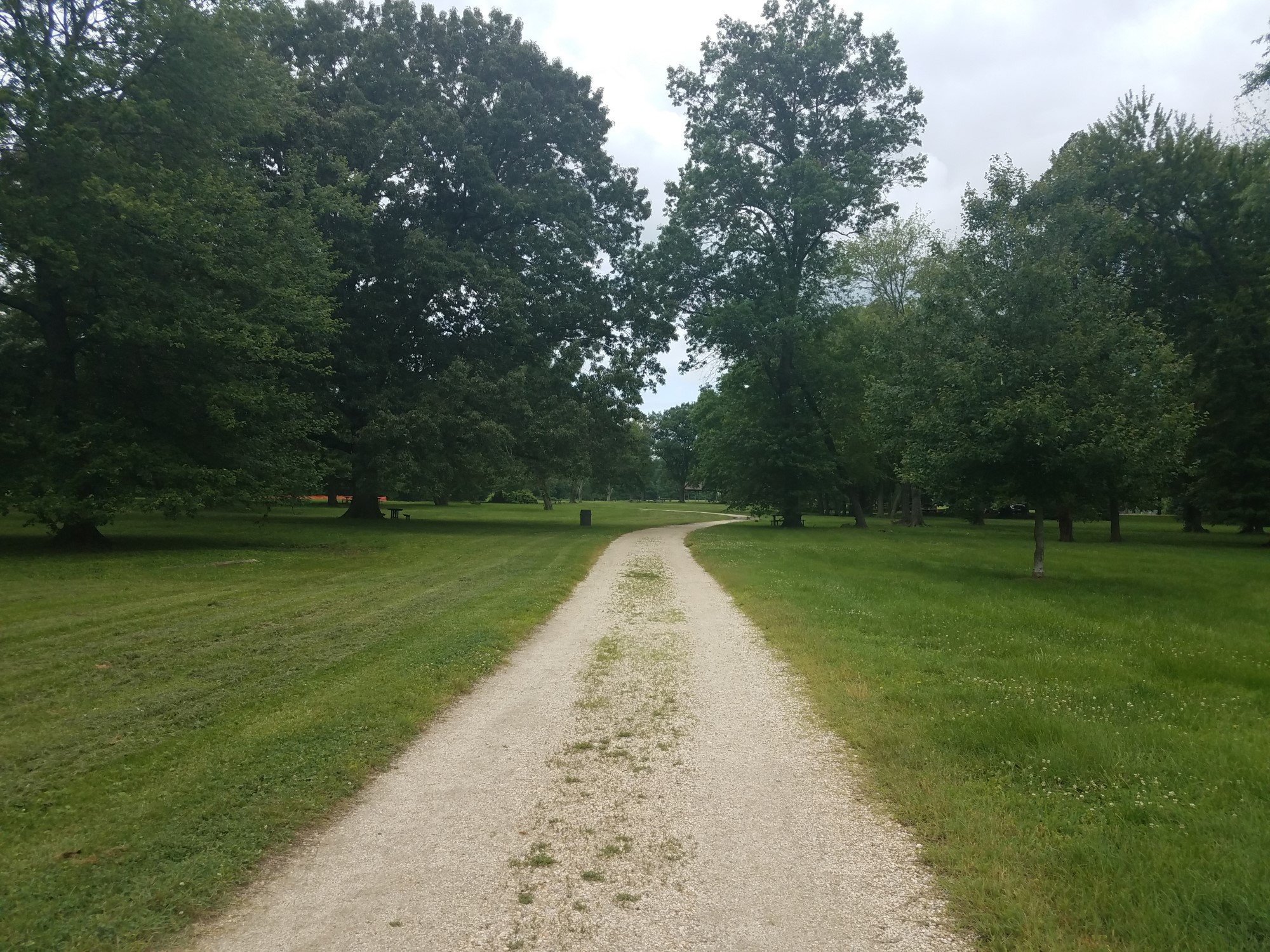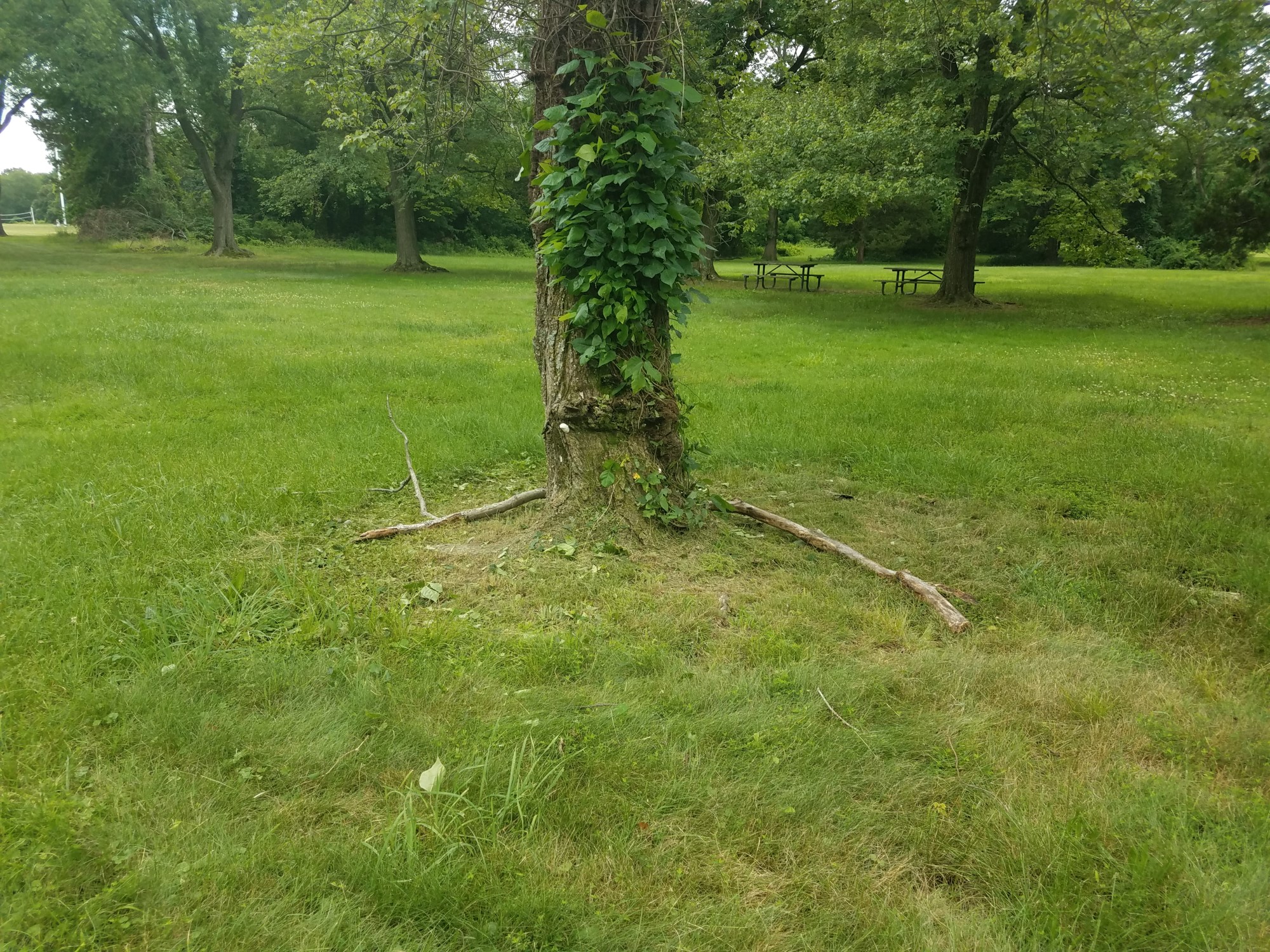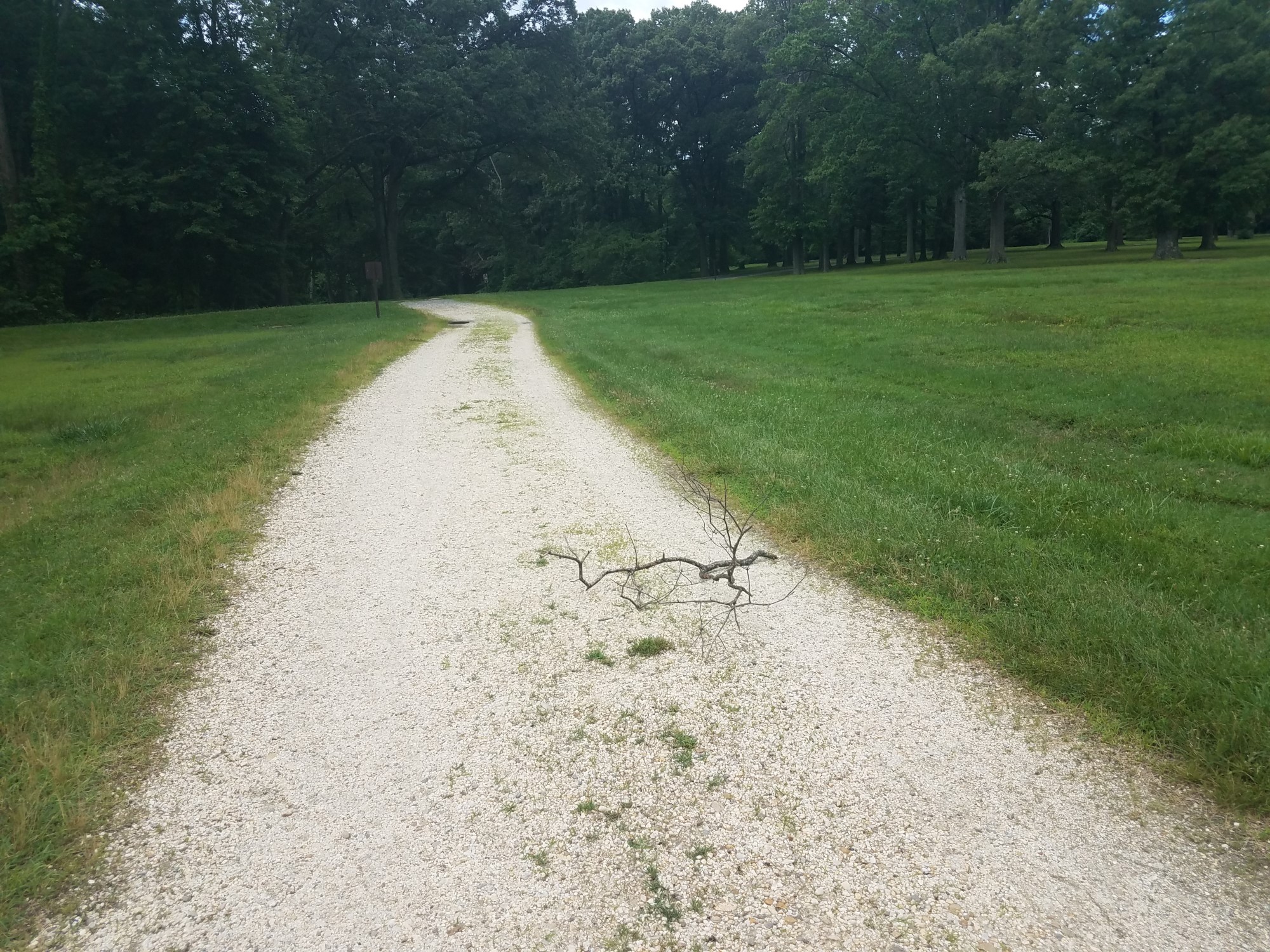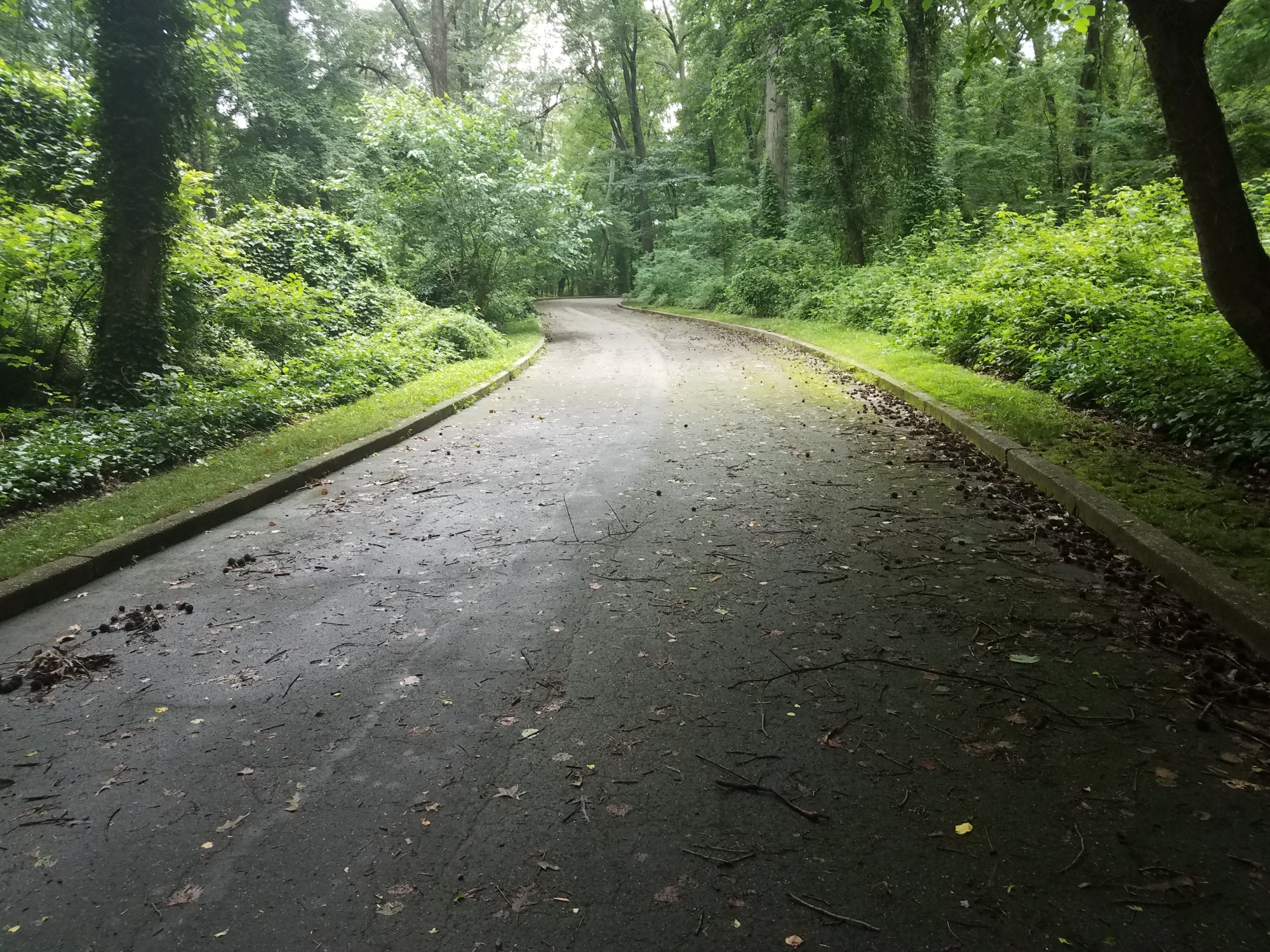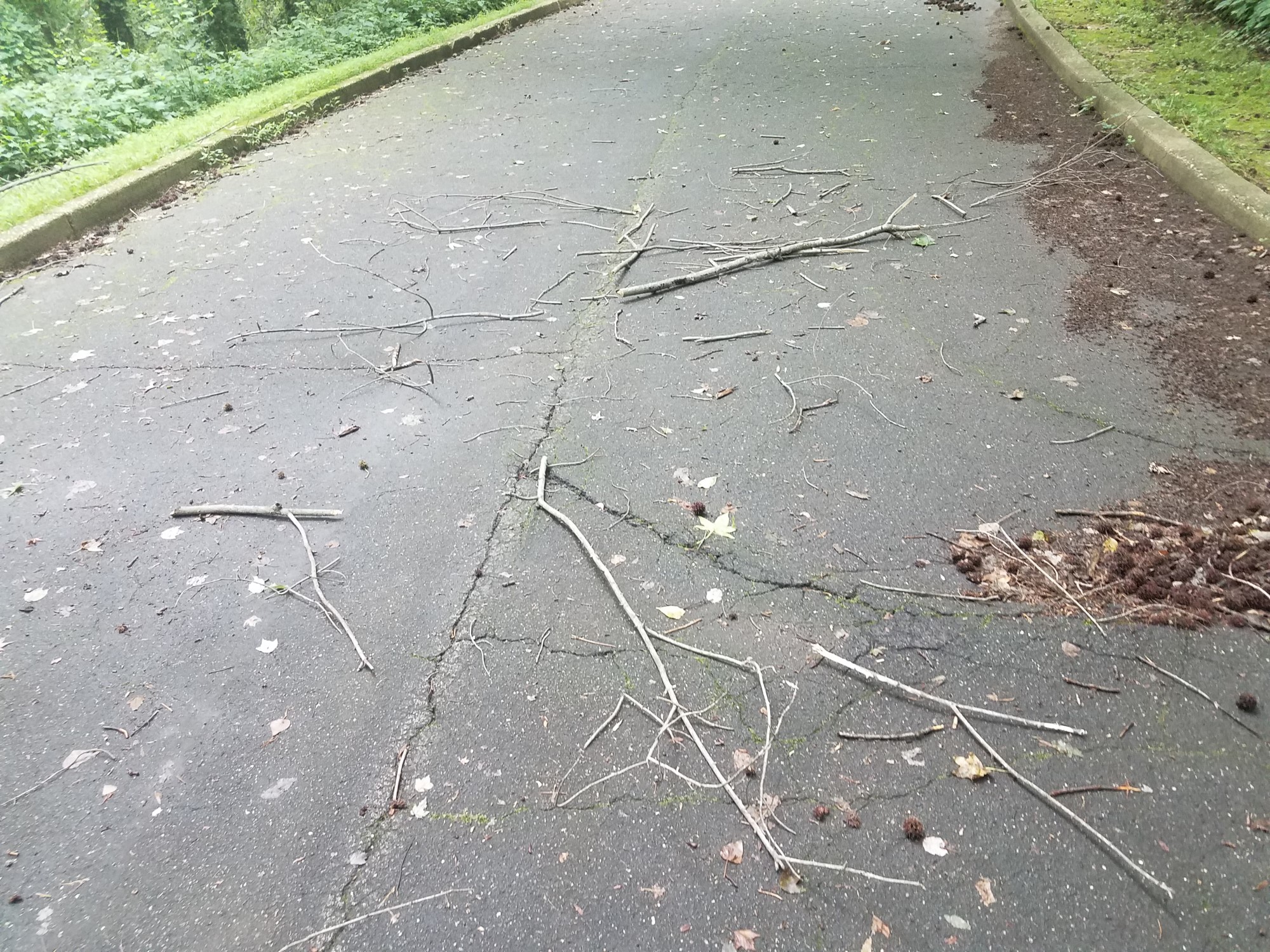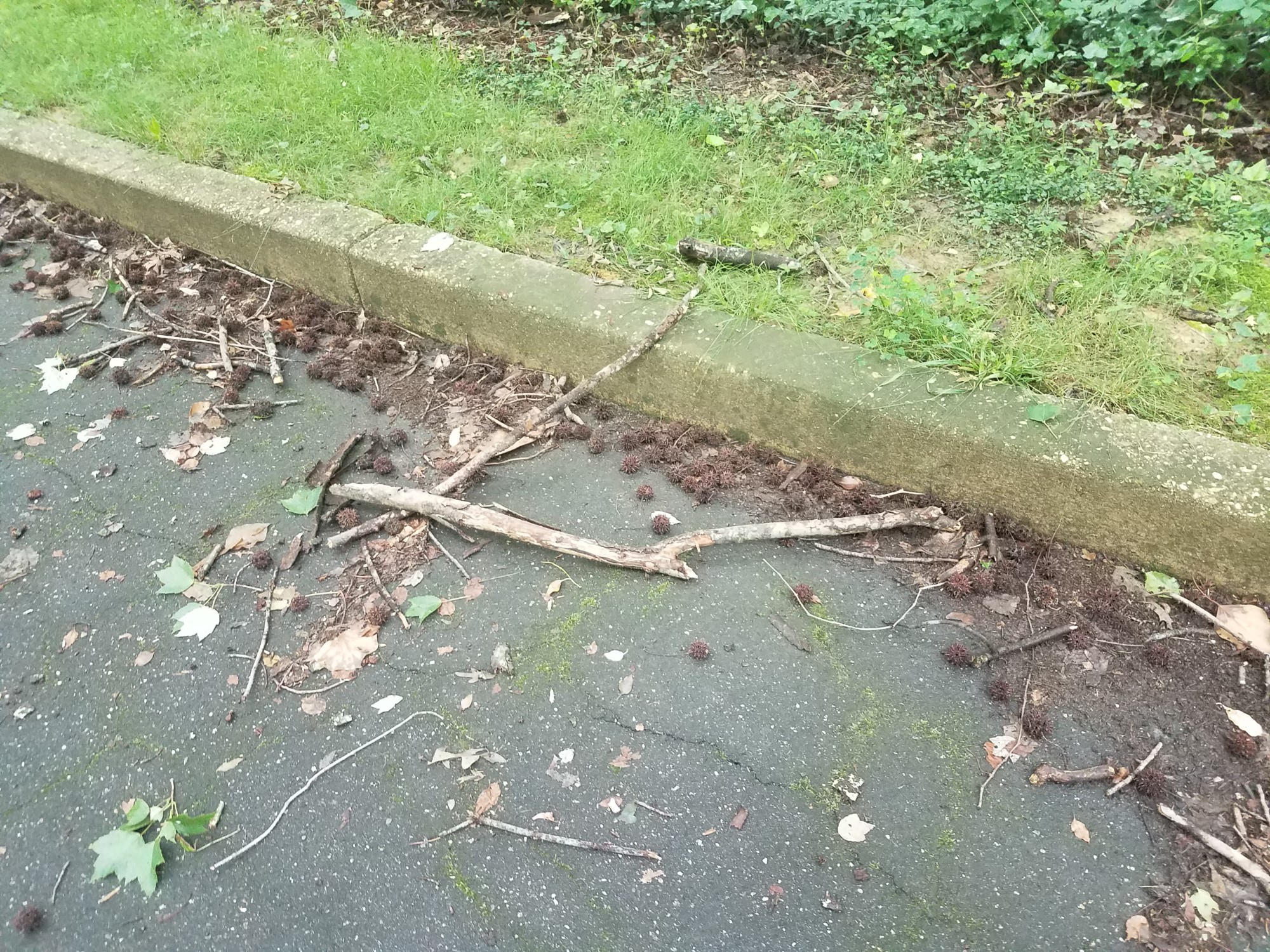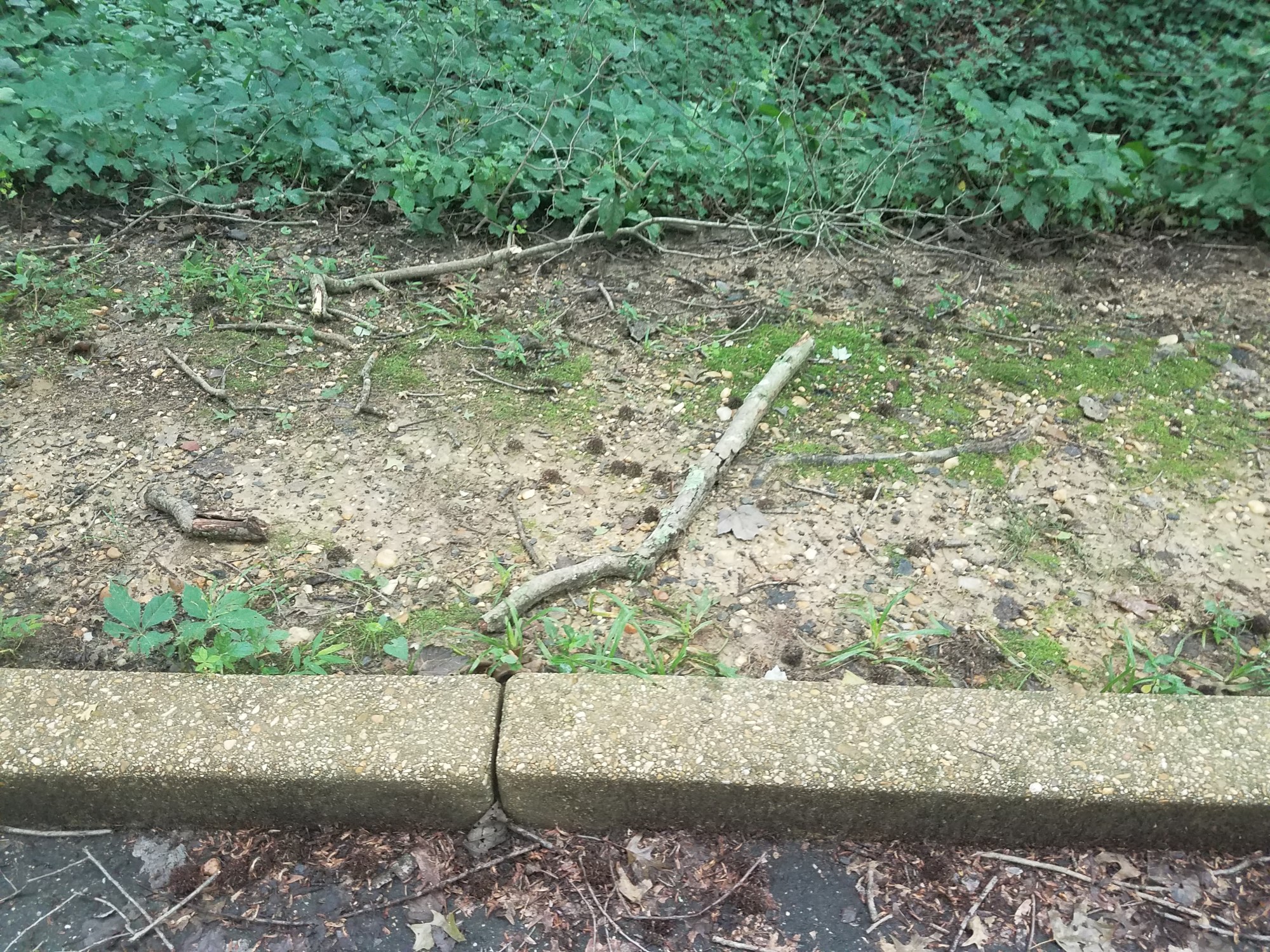Probability of Finding Sticks for Self Defense
6/22/18
In my How Many Cars Have Old Antennas article, I looked at the relative frequency of automobiles with the long old-school antennas. In this article, I take a similar approach in investigating the frequency of sticks I find that are good for self defense.
It is often held in martial arts circles that sticks (bo, jo, kubotan, cane, escrima, etc.) are the most practical of weapons to practice in part because we are likely to find sticks and stick-like objects (pipes, antennas, etc.) "out there" rather than find nunchakus, throwing stars, spears, etc. While stick-like objects are definitely more common than say finding a nunchaku, I was curious as to the general claim of sticks being prevalent. Therefore, I set out to estimate this probability, as well as explore related issues.
Over a period of two days, I walked in areas I normally walk in my day-to-day life. Specifically, I walked on a trail around an office building I work at, as well as several trails at a large park I often walk at. I simply walked along the trails, observing if there were sticks or stick-like objects, and noted if I thought these objects could be used to defend myself.
For example, I may see a tree branch laying on the ground near the path I am walking on. However, if this tree branch is too heavy to pick up, or is not too heavy but is totally rotten, then in each case, while it is a stick, it is not suitable for self defense purposes. Another example would be if I observed a fiberglass snow pole marker put in the ground. These can easily be taken out of the ground and are quite solid and would be great for self defense.
The concept "near the path" was defined as an estimated 10 ft to either side of where I was walking in the middle of the path. While I'd find more sticks if I went further out, I figure that a fight "spilling over" 10 feet to either side of where a fight would start is reasonable for this informal study. This is sort of like a very informal continuous line/belt transect sampling for abundance from ecological sampling, where I'm using the natural paths/trail/road as my transect. If I encountered a very large pile of sticks, I counted this event as being 1 good stick. I also did not count really small sticks/twigs as even being sticks at all. I tried to be consistent by only counting sticks larger than 6 inches (about a standard kubotan length) as sticks, as estimated by my eyeball.
Here are the results over these 3 trials:
- 6/19/18, trail around office building, some trees. Distance (ft): 3,540, Good Sticks: 9, Total Sticks: 17, Good Sticks/Total Sticks = ~53%, Good Sticks/Distance = ~<.01/ft
- 6/21/18, trail in park, field and through some trees. Distance (ft): 2,190, Good Sticks: 7, Total Sticks: 14, Good Sticks/Total Sticks = 50%, Good Sticks/Distance = ~<.01/ft
- 6/21/18, trail in park, surrounded by trees. Distance (ft): 2,716, Good Sticks: 42, Total Sticks: 197, Good Sticks/Total Sticks = ~21%, Good Sticks/Distance = ~.02/ft
I have a few comments on all of this. First, while forest areas and areas with trees in general tend to have more sticks on the ground, they are also more shady and secluded, which would probably be a worse area to be walking in than out in the open with less sticks around. Second, a good chunk of the sticks found were useless rotten sticks. This makes sense, because for a branch to fall from a tree it is most likely going to be rotten. Also, these public areas where I was walking are maintained. That is, presumably there are landscaping or ground crews that periodically clean up sticks and other debris to keep the place looking nice and being safe.
If I combine this data with the stick-like data from the antenna study, I get the following overall results:
About 14% (=110/796) of sticks or stick-like objects were encountered. I estimate my total distance walked to be 13,529 feet, or 2.56 miles, which gives about .06 such good sticks per foot walked, or about 43 per mile walked.
I could easily repeat this idea at other places I walk. I expect that for more trials, the frequency of good sticks will decrease (but probably not go to 0), and also Good Sticks/Distance will tend towards 0.
Is, therefore, the solution to carry a stick (or knife or gun) on your person, so P(Good Stick) = 100%? Perhaps, but that raises a whole other set of questions/problems for you. Is it legal? Can you take it anywhere? Do you practice with it enough? Will you irrationally over-rely on it? Can the enemy use it against you? Will you make a Type 1 or Type 2 error?
I used to practice cane a lot, but recognize now it has some problems. Canes are enjoyable and interesting weapons in that they are a mix of a jo or escrima stick but with a curved handle making nunchaku-like techniques possible. Canes are legal weapons, and you can carry them about anywhere. However, some problems are that a young person is unlikely to carry a cane and doing so will raise eyebrows and suspicion. They can probably also still be temporarily seized and searched because it is possible you are holding a cane that has a blade concealed in it since those versions exist. If you are older, carrying a cane won't raise eyebrows, but by that time, if you need a cane, you probably will lack the coordination, balance, and strength to use a cane effectively.
Kubotans are very short sticks, usually made out of very hard impact resistant plastic, attached to a keychain. Some limitations are you have to get close to an enemy to use it, as well as if you lose it, then the enemy has your car and house keys. You also have to watch out for the ones that look like an offensive weapon with extra spikes and so forth or kinds that resemble brass knuckles. You don't want those kind as they can get you in trouble. An effective logical substitute might be a tactical pen, but like all weapons, can you carry it everywhere and can you get to it fast enough?
Escrima sticks, walking sticks, bos, and jos, are all very practical, but you'll probably never encounter one in real life unless you bring it with you. Out of those choices, escrima sticks are probably the most effective, but walking sticks are probably the most legal and natural to be seen carrying. From my experience, sticks found on the ground are a quite different beast from a perfectly lathed escrima stick or bo or jo. The smoothness, balance, density, aerodynamics, and weight differences make these found sticks entirely different weapons from their theoretical cousins.
Therefore, learning how to improvise weapons is probably more useful than learning a specific weapon which might not be there for you in certain circumstances. What is also always there for you is conditioning and simple empty hand self defense skills that you have trained realistically in, as well as walking with a buddy, and being observant and keeping your wits about you to avoid dangerous situations.
Thanks for reading.
Please anonymously VOTE on the content you have just read:
Like:Dislike:
